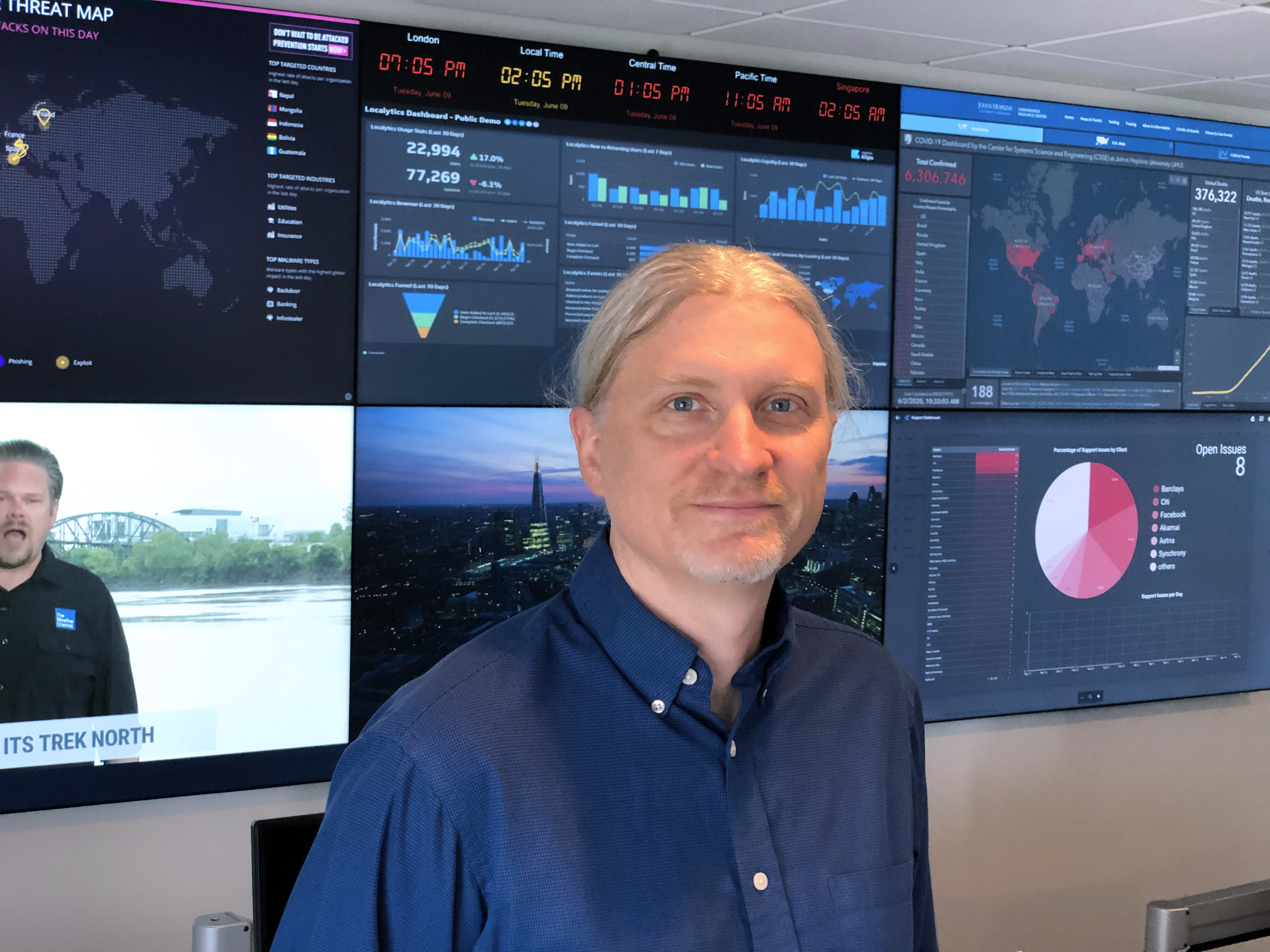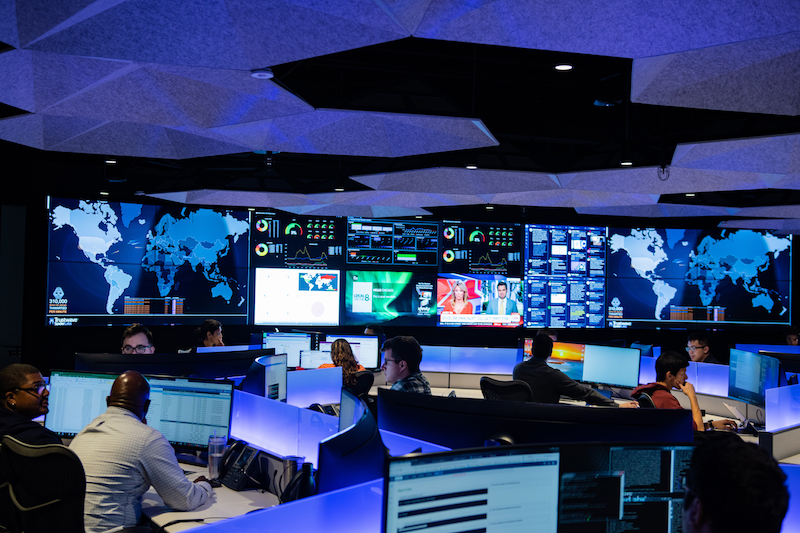AV from Anywhere
Critical Remote Infrastructure Considerations for Pro AV
The COVID-19 pandemic has changed the way millions of people live, work, and communicate. The crisis—and subsequent shelter-in-place requirements—have spurred the use of pro AV equipment for everything from remote learning and business videoconferences to live-streamed multi-site church services and concerts. In many instances, these communications are being captured, managed, and carried via critical remote pro AV infrastructure: the off-site equipment, servers, software, and network intelligence that operators can access and maintain without leaving their home environments. Remote AV has indeed proven to be a lifeline for organizations across commercial vertical markets.

“Remote infrastructure is the key to continuing operations while keeping operators and the general public safe,” said Benjamin Watkins, vice president of technical engineering at Constant Technologies. “Our solutions are providing these clients with tools they need to access remote systems and work remotely themselves.”
The Building Blocks of Remote Access and Management
Critical remote infrastructure includes the cameras, microphones, processors, and pro AV production/display equipment at a site, and extends through the connecting two-way network and its hardware at every other site in the system. And that’s not all: the infrastructure list may also include every piece of equipment, software, and services provided by other users and their third-party suppliers.
Each of these elements is a building block in the remote infrastructure, a discrete item that has to combine in a well-integrated, compatible, and remotely controllable manner with the other building blocks for the entire remote infrastructure to work. Making this happen requires much care and attention on the part of the pro AV engineer, and interoperability is essential.
“Managing building blocks effectively is key,” said David Beckwith, a systems consultant with Riedel Communications. “You’re not just relying on your own physical hardware, but other manufacturers’ equipment in other locations that you invariably will have to integrate with, plus other people’s networks. Now you’re stepping outside your comfort zone.”

Flexibility in how these building blocks are “stacked” also matters, said Samuel Recine, vice president of sales, Americas and Asia Pacific, with Matrox Graphics’ AV/IT Group. “Be careful with the full debate about ‘one-size-fits-all AV infrastructure’ thinking,” he said. “What we see now is that there are different solutions that solve different problems.”
Centralization (The Network Is Now the Core)
The very terms that define critical remote infrastructures are changing, and with them the concepts of how these systems should be built, equipped, and operated.
A daily selection of the top stories for AV integrators, resellers and consultants. Sign up below.

Take the term centralization: “In the old days, everybody had a core piece of equipment—whether it was a MediorNet box or an intercom matrix—and that was the center of their world; that was the core of their network,” said Beckwith. But then the internet and IP arrived, transforming the network into the centralized heart of AV operations, with everything else being relegated to a peripheral role. “So now the network is the core and the matrix that used to be the core is simply an edge device hanging off the network,” he said.
Decentralization (Distributed Teams)
Even before COVID-19, AV operators were moving to decentralize their operations—both to spread resources more evenly over their territories and to distribute their teams across multiple locations to ensure better support across the enterprise.
Now that COVID-19 is here and lockdowns are a way of life, traditional broadcasters are coming to companies like Riedel and asking, “‘Hey, we still have to pull off this broadcast during COVID, how do we do it?’” said Beckwith. The answer is distribution across the board. “It’s really about decentralizing your workforce: taking your core equipment, taking it out of the mobile unit, putting it into your network operations center, and then simply trying to connect the staff to that core equipment so they can do the job that they normally did on site with the equipment on site,” he said.
The good news: “All of this is a really pretty simple equation because you’re not changing anything schematically,” Beckwith observed. “You’re just moving the equipment physically and you’re relying on your network connections. The great thing, as far as our customers go, is that network production staff are starting to gain a lot of confidence in the idea of, ‘Hey, we can really do this [project] this way, and this works.’ You know, it’s on parallel with the new working-from-home model, where we’re realizing, ‘Hey, wow, this really works.’”
Remote Users Need Intuitive UI
Today’s AV operators have enough to worry about, even without having to interact with a remote infrastructure. Add the fact that tech support teams are busier than ever, and the need for an intuitive user interface (UI) becomes apparent.
This fact has not been lost on Riedel Communications. “One of our great strengths is that our user interfaces are so visual, easy to use, logical and intuitive,” said Beckwith. “I can sit somebody down in front of an intercom system or a MediorNet system and watch them point-and-click and drag-and-drop. Everything’s visual and they get it.”
This ease-of-use extends to the integration of AV equipment and software across remote infrastructures, which customers also want to be simple and intuitive. “AV products that can integrate more seamlessly in that fashion have more of a citizen mentality and can confederate better with third-party software and hardware,” said Matrox’s Recine.
Security Is Essential
Beyond the building blocks for remote infrastructure, intuitive UIs are needed at every level of a pro AV system. While this idea is especially relevant today, during the COVID-19 crisis, it will surely continue to be significant as workforces and workplaces evolve. But none of this matters if the remote infrastructure or AV data streams can be hijacked by rogue actors.
That’s why “the primary concern when implementing any remote technology is security,” Watkins said. “This can take many forms, including strong encryption, segregated networks, access control lists, and an ongoing plan for patch management of devices. As well, security should be properly implemented and up-to-date on any endpoint devices like encoders, decoders, and servers, especially anything that touches the client’s actual infrastructure. A layered security model will also implement appropriate access controls and firewalls at various points in the client’s network.”

The good news is that remote infrastructure security can be configured to align with organizational security mandates—and that can leverage different approaches to keep user data and content safe.
“One of the things that we’ve recognized is that not everyone wants to do everything the Zoom way or the Microsoft Teams way,” said Recine. “Especially among government and defense organizations, there continues to be interest in dedicated encoders that are very passive as a capture point and can live on different networks than the node being captured. It’s one thing to hack the command-and-control of a stream or the payload/content itself, but it’s an entirely different thing to have mission-critical PCs running collaboration software directly on open networks. Anything that helps prevent gaining access to an organization’s network is a help.”
At the same time, “some of our Matrox encoders are built to capture audio, video, and graphics and make them available for streaming and recording,” Recine noted. “These are obviously very hot properties right now. While many communications nodes managed by companies can use conventional collaboration software, some equipment still requires powerful PCs or specialized and expensive software licenses, or simply runs on networks that cannot be shared with the public space. So there are many hybrid environments where different tools are used and sometimes even adapted to work with each other.”
Great Opportunity for AV Firms to Upgrade Services
The COVID-19 crisis has exposed many of the challenges and opportunities regarding the critical remote infrastructure for pro AV. Many AV firms are positioning themselves as trusted advisors, helping clients audit their current offerings and explore upgrade paths.
“This is an opportunity to work with our manufacturers on the technologies they’re supplying and to give them feedback about how their products need to change or are being used to meet the changing needs of our clients,” said Watkins. Taking this opportunity will ensure that clients have access to the best remote infrastructure possible so that their pro AV streams are robust, reliable, and secure.
Margot Douaihy, Ph.D., is a lecturer at Franklin Pierce University.

